
The Airline Deregulation Act is a 1978 United States federal law that deregulated the airline industry in the United States, removing federal control over such areas as fares, routes, and market entry of new airlines. The act gradually phased out and disbanded the Civil Aeronautics Board (CAB), but the regulatory powers of the Federal Aviation Administration (FAA) were not diminished over all aspects of aviation safety.
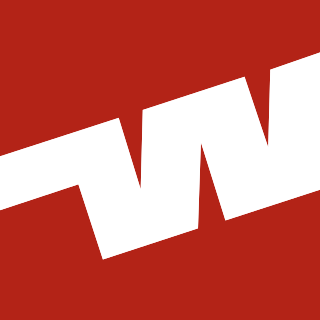
Western Airlines was a major airline in the United States based in California, operating in the Western United States including Alaska and Hawaii, and western Canada, as well as to New York City, Boston, Washington, D.C., and Miami and to Mexico City, London and Nassau. Western had hubs at Los Angeles International Airport, Salt Lake City International Airport, and the former Stapleton International Airport in Denver. Before it merged with Delta Air Lines in 1987 it was headquartered at Los Angeles International Airport (LAX). Throughout the company's history, its slogan was "Western Airlines...The Only Way to Fly!"

San Francisco International Airport is the primary international airport serving the San Francisco Bay Area in California, United States. It is located in San Mateo County.

San Francisco Bay Oakland International Airport, formerly Metropolitan Oakland International Airport, is an international airport in Oakland, California. The airport is located 7 miles (11 km) south of Downtown Oakland and 12 miles (19 km) east of San Francisco, serving the East Bay of the San Francisco Bay Area. The airport is owned by the Port of Oakland and has domestic passenger flights to cities throughout the United States and international flights to Mexico, El Salvador, and Portugal, in addition to cargo flights to China and Japan. The airport covers 2,600 acres (1,100 ha) of land. The airport is an operating base for Southwest Airlines, which operates point-to-point routes with bases instead of a traditional network with hubs.

Eugene Airport, also known as Mahlon Sweet Field, is a public airport 7 miles (11 km) northwest of Eugene, in Lane County, Oregon, United States. Owned and operated by the City of Eugene, it is the fifth-largest airport in the Pacific Northwest.
World Airways, Inc. was an American airline headquartered in Peachtree City, Georgia in Greater Atlanta. The company operated mostly non-scheduled services but did fly scheduled passenger services as well, notably with McDonnell Douglas DC-10 wide body jetliners. World Airways ceased all operations on March 27, 2014.
Pacific Southwest Airlines (PSA) was a low-cost US airline headquartered in San Diego, California, that operated from 1949 to 1988. It was the first substantial scheduled discount airline. PSA called itself "The World's Friendliest Airline" and painted a smile on the nose of its airplanes, the PSA Grinningbirds. The Los Angeles Times called PSA "practically the unofficial flag carrier airline of California for almost forty years."
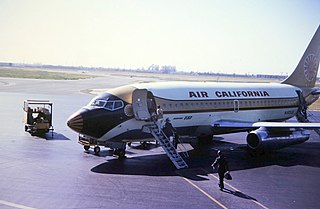
Air California, later renamed AirCal, was a U.S. airline company headquartered in Newport Beach, California that started in the 1960s as a California intrastate airline. The airline's home airport was Orange County Airport, now known as John Wayne Airport.

The Civil Aeronautics Board (CAB) was an agency of the federal government of the United States, formed in 1938 and abolished in 1985, that regulated aviation services and conducted air accident investigations. The agency was headquartered in Washington, D.C.

California Redwood Coast – Humboldt County Airport, also known as Arcata–Eureka Airport and Arcata Airport, is in Humboldt County, California, United States, 8 miles (13 km) north of Arcata and 15 miles (24 km) north of Eureka, in McKinleyville.

Imperial County Airport is a county-owned public-use airport in Imperial County, California, United States. Also known as Boley Field, it is mostly used for general aviation, but has scheduled passenger service from one commercial airline. Service is subsidized by the Essential Air Service program. The airport is located 1 nautical mile south of the central business district of Imperial, California, partially in the city of Imperial and partially in an unincorporated area of Imperial County. It serves nearby communities, including El Centro.
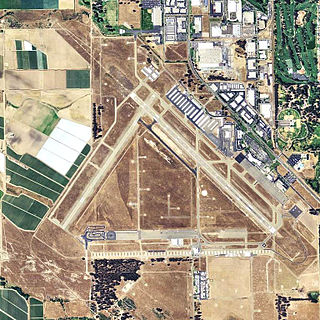
Santa Maria Public Airport is three miles (5 km) south of Santa Maria, in northern Santa Barbara County, California, United States.

The California Public Utilities Commission is a regulatory agency that regulates privately owned public utilities in the state of California, including electric power, telecommunications, natural gas and water companies. In addition, the CPUC regulates common carriers, including household goods movers, limousines, rideshare services, self-driving cars, and rail crossing safety. The CPUC has headquarters in the Civic Center district of San Francisco, and field offices in Los Angeles and Sacramento.
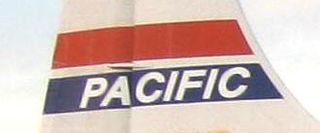
Pacific Air Lines was a local service carrier on the West Coast of the United States that began scheduled passenger flights in the mid-1940s under the name Southwest Airways. The company linked small cities in California with larger cities such as Los Angeles and San Francisco. Flights later operated to Portland, Oregon, and eventually reached Las Vegas and Reno in Nevada.

Trans Caribbean Airways (TCA) was an irregular air carrier until 1957, when it was certificated by the Civil Aeronautics Board (CAB) as an international air carrier to fly from New York City to San Juan, Puerto Rico. TCA thereafter operated as a small scheduled airline specializing in flying from New York to the Caribbean, adding a small number of additional routes over time until it was purchased by American Airlines in 1971.
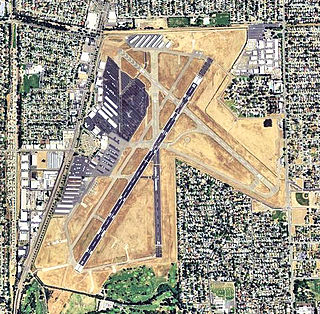
Sacramento Executive Airport is a public airport three miles (5 km) south of downtown Sacramento, in Sacramento County, California, United States. The airport covers 540 acres (219 ha) and has two lit runways and a helipad.
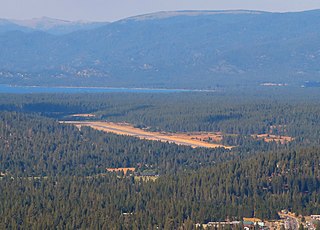
Lake Tahoe Airport is a public airport three miles southwest of South Lake Tahoe, in El Dorado County, California. It covers 348 acres (141 ha) and has one runway; it is sometimes called Tahoe Valley Airport. Although the airport had almost forty years of airline service, since 2000, it has served only general aviation.
Transocean Air Lines was an airline based in the United States that operated from 1946, when it was established as ONAT (Orvis Nelson Air Transport Company), until its bankruptcy in 1960. It was based in Oakland, California.

Intrastate airlines in the United States were air carriers operating solely within a single US state and taking other steps to minimize participation in interstate commerce, thus enabling them to escape tight Federal economic airline regulation prior to US airline deregulation in 1979. These intrastate carriers therefore amounted to a small unregulated, or less regulated, sector within what was otherwise then a tightly regulated industry. Geography alone did not determine intrastate status.

Holiday Airlines was a California intrastate airline. Holiday operated scheduled passenger service with Lockheed Electra turboprops in California almost exclusively serving Lake Tahoe from Southern California and the San Francisco Bay Area during period 1965-1975. Holiday started roughly contemporaneously with Air California but the two airlines had different trajectories.
















